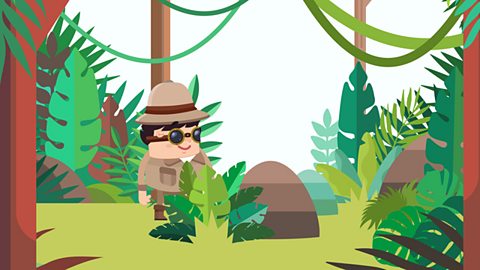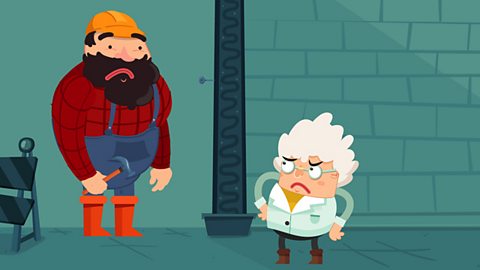Sound is vibrations
Sounds are made when objects vibrate. This makes the air around the object vibrate and the air vibrations then travel to and enter your ear.
Sound waves can travel through solids (such as metal, stone and wood), liquids (such as water) and gases (such as air).
Watch: How sound enters your ears
Discover how sounds are made.
Why can't we hear this alien scream in space?
And have you ever wondered, when you make a sound, like, ooooooooooooo, how does the sound actually get into your ears?
Watch what happens when the spaceship crashes on Earth.
That’s more like it.
So why is it than we can hear the alien scream now?
Well, sounds are made from vibrations.
We can't see vibrations, but if we did they would look a little like this.
Sounds are made when objects vibrate.
Soundwaves make the air around vibrate and the air vibrations enter your ear.
You hear them as sounds.
In space, there is nothing for the soundwaves to travel on.
That's why we couldn't hear the alien scream.
How the ear works
Investigating sound waves
Watch this clip from the where an experiment shows how we can 'see' sound waves.
Watch: Visible vibrations
Take a look at different sound waves in The Science Museum.
Activity 1: Fill in the gaps
Activity 2: Quiz
Activity 3: Earmuff investigation

Investigate which material would be best to make earmuffs.
You will need: two cups, different materials (such as cardboard, paper, cotton wool, tissue paper, foil etc), a sound
- Put the first material in the cup and then place the cup over your ears.
- Listen to the same sound at different distances from the sound source.
- Record how loud the sound is in a table.
- Repeat stages first three stages with each material you have found.
What did your results show?

It's important that we carry out a fair test. What did you do in your investigation to ensure it was a fair test?
To ensure it is a fair test, you need to:
- Stand the same distance away from the sound each time ( eg. 1m, 2m and 3m away)
- Keep the volume and pitch of the sound the same
- Use the same amount of material
Bitesize Primary games. gameBitesize Primary games
Play fun and educational primary games in science, maths, English, history, geography, art, computing and modern languages.

More on Sound
Find out more by working through a topic
- count1 of 4

- count2 of 4

- count3 of 4
